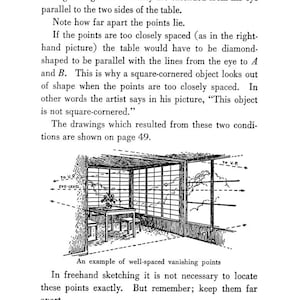

"Perspective Made Easy" by Ernest Norling. "Vanishing Point: Perspective For Comics From the Ground Up" by Jason Cheesman-Meyer Fortunately, there are more accessible sources for learning and honing your perspective:

The fundamentals are still critical for all artists, and like death and taxes, perspective is an unavoidable aspect of our universe. Mileage is and will always be important, but you want to make every mile count for as much as it can towards your destination.ĭoes that mean you can ignore perspective? Haha, no- it doesn't. It's not about how much time you draw, it's how much you can extract and learn from every moment you draw that we want to maximize. That's right, instead of grinding pages of mirroring complex planes you could be focusing on the human body, which is one of the most difficult and demanding subject matters of all. Doing so could easily lead to you taking a more meandering road than you need to - effectively wasting your time.

Don't let the common consensus of H2D as mandatory reading force you to fall in line without considering just how that applies to you. What if you tend to focus on organic subjects? Then for now let's say you don't need H2D, but that doesn't mean you shouldn't look at it, reference it (more on that later), or have it for fun. Say you want to draw hard surface objects and epic architecture: then, yes, H2D is probably a book you need to have on your shelf. So let's do a very quick question and answer session to help you: What do you like to design and draw? Sexy anime people? Epic vistas? Weapons? Portraits? Mechs and vehicles? Animals? Objects you find in your every day life? Let's break it down to organic (humans, animals and such) and inorganic or hard surface (objects, weapons, and vehicles). US college students change majors an average of three times before graduating, and about 80% of students change at least once. To start with, is "How to Draw" what you need? We must be mindful and honest with ourselves when it comes to artistic goals, but as a beginner or intermediate, it is not surprising or bad to not fully know what our goals fully are. "How to Draw" (commonly referred to as H2D) by Scott Robertson is regarded by many self-taught artists as the pinnacle of resources - and for some it may very well be. It's a little much and can dilute precious time that could be spent on more focused, deliberate practice. With a figure drawing book, you at least stay on one topic: the human figure, but with "How to Draw" you get some perspective and camera lens information, cars, airplanes, environments.

It is broad, and in being so, forces a beginner through too much, too quickly. Literally answering the most common question of "How do I learn to draw?", coupled with Robertson's (well earned!) reputation, causes it to become the siren's song to many young artists and distracts them from an honest evaluation of their needs and how best to meet them.Ģ. Its title, in its vagueness, promises more than any other. There are two main reasons I zero in on Scott Robertson's "How to Draw":ġ.
#PERSPECTIVE MADE EASY PDF SERIES#
It is merely a series of warnings on putting too much significance on a resource without weighing its benefits to that individual's goals. This is not a rant trying to convince anyone that they should not invest in this book. Scott Robertson is one of my artistic heroes, and the one whose footsteps I wish to follow as an aspiring industrial designer. Without a doubt, I have used this book to solve more problems than any other, up until this point in my journey. They cannot get together.I would like to preface this article by saying that "How to Draw" is one of my favorite learning resources of all time. The two vanishing points hold opposite sides of the center of interest. You can thus follow the change in direction of the points. The two vanishing points lie on the eye-level line out in the direction of the two lines forming the square corner on which you stand.Īs the object is turned this corner revolves around the point on which you stand. When you point in the same direction as the line you are sketching, you are pointing toward the vanishing point of that line. This relationship does not hold, of course, from a one-point perspective. One perspective point is on the left and the other on the right of the center of interest. As soon as we turn the cube in order to create that relationship we find that the point passes to the other side. Notice that we cannot have both points on the same side of the drawing. Now draw a whole group of buildings in this manner, Make a drawing of some buildings that you can see from your window. Place the books on something that is above the eye level and sketch them.


 0 kommentar(er)
0 kommentar(er)
